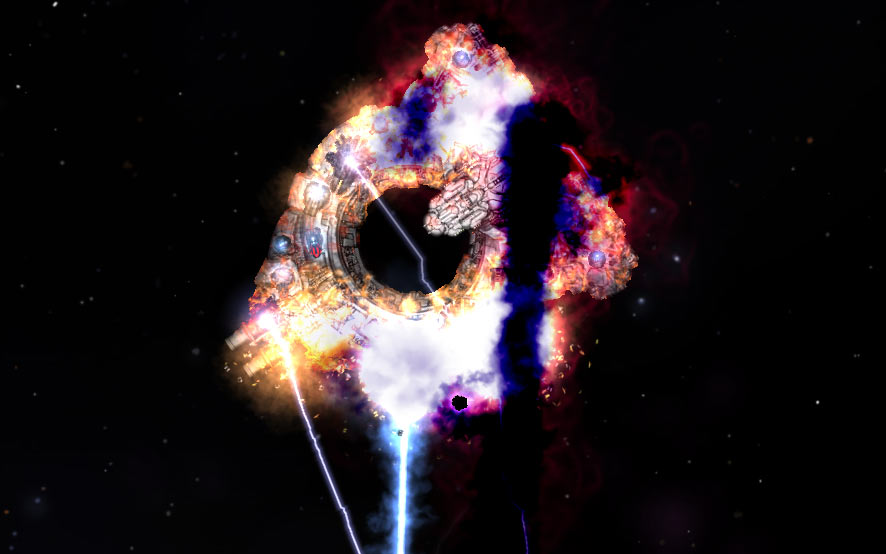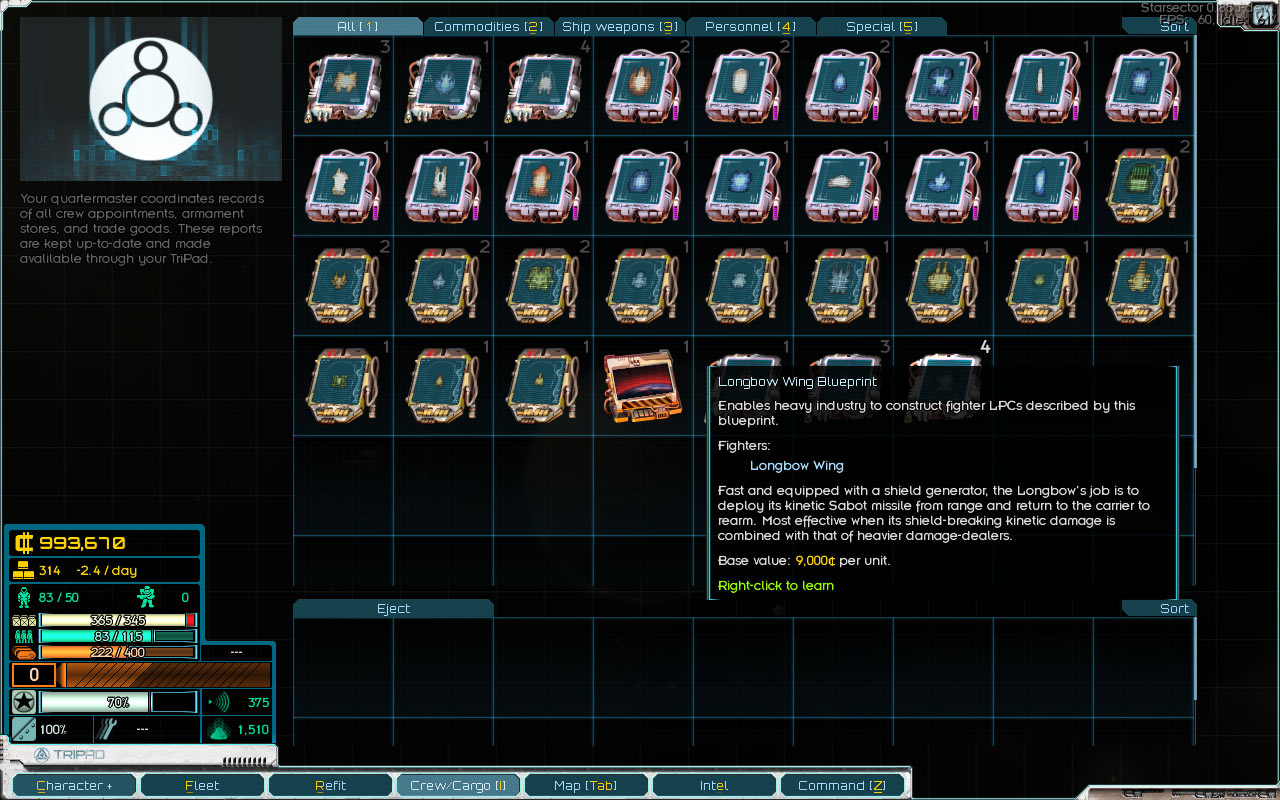First off: what the heck is the Codex? It’s basically an in-game encyclopedia where you can look up ships, weapons, and so on. The current implementation is very, very old and and this point really showing its age – frankly, it’s clunky and not very useful, but on the bright side, it’s also not strictly speaking a required feature, so it was fine to leave it be for a while. I’ve been on a roll with QoL work lately, though, and the game is certainly far enough along now for a proper Codex rework, so I decided to jump into it – I’d have to do it at some point!

I started working on the Codex update with a sort of standard question to get my bearings, design-wise – “why is this in the game?” That’s a question with sharp edges, because if there isn’t a good answer, then maybe it should be cut instead, and the time and effort put into other things. Obviously, that didn’t happen, or we’d have a much shorter blog post!
Read the rest of this entry »
Part 1 of this blog post series is here. Here in part 2, we’ll dive into making the remaining factions more memorable!

Persean League
“An alliance formed to counter Hegemony domination of the Sector. Members of the League don’t necessarily agree on all issues, domestic or otherwise, and may even come into armed conflict with one another. But the League is united when it comes to the Hegemony who they consider to be illegitimately enforcing martial law in the name of the Domain, a dead political entity. The League, by its laws, unites against other external threats such as particularly meddlesome megacorporations, warlords, and the Luddic Path.”
The League’s core identity is going to be that of using midline ships. However, because those are going to be sprinkled in throughout the other factions, the League will also have access to a brand-new missile weapon lineup: directed energy munitions, or, put more simply, missiles that fire lasers when they get close enough to their target. In addition, it’ll get a new battleship (to go along with the already-existing Conquest-class, which is a midline battlecruiser.)
Read the rest of this entry »
(First off: “uniquifying” is a real word! It doesn’t quite fit how I’m using it here, perhaps – more strictly, it’s about removing duplicates – but it’s close enough.)
With that important note out of the way: some factions in the game have a stronger identity than others. If you’ve played the game at least a bit, you have a pretty fair idea of what to expect of a Hegemony fleet, for example – large chunks of metal with a lot of firepower. In contrast, something like the Luddic Church is more muzzy. It’s got the same kinds of ships as the Hegemony, more or less, but they also tend to mount converted hangars with Perdition-class bomber wings, and some numbers – officer quality, ship quality, the exact mix of ship types – are adjusted. The two factions are different, but it’s not the kind of different that easily sticks in your mind – without checking, I couldn’t tell you exactly how those numbers differ, for example.

So, some factions are more unique than others; this isn’t necessarily a problem – in fact, it’ll be the case no matter what, to some degree – but it would still be very nice if each faction was memorable.
Read the rest of this entry »
I’ve been working on a lot of content recently – some hand-crafted missions, new weapons (and ships), some endgame material, and so on. While that’s all terribly exciting, it unfortunately doesn’t leave me with a whole lot I can talk about without spoiling things. There is another feature I’m working up to – somewhere at the intersection of “mechanics” and “content”, a bit more the latter – that I’ll be able to talk about (at least, if it pans out), but that’s still a little ways off.
In the meantime, I thought I’d revisit some of the gifs I posted on twitter while working on a new set of weapons. (There are also ships that go with these weapons, but those are not to be talked about, I’m afraid. Hegemony COMSEC was quite clear on the subject.) I’ll also talk a bit more about the effects, so even if you’ve seen these already, there’ll be something new – and there may be one or two you might have missed, even if you’ve been following along!
First, a picture of the glorious mess these can produce when employed against a hapless Paragon. This is a bit over the top; I wouldn’t imagine things would look quite this extreme very often.

(Lest you think I hate Paragons, since they seem to be commonly used for target practice: it’s only because they’re the only thing sturdy enough, I swear.)
Read the rest of this entry »
How starships get produced has been heavily abstracted so far – there’s a colony, and it spawns fleets made up of faction-appropriate ships, and that’s about all there was to it. To be fair, that’s all that needed to be there, since it was not something the player could interact with in more detail than attacking those fleets.
Now that the player can establish colonies and manage a faction of their own, we need more detail. Not so much that it’s a chore to manage, but enough to cover the things the player will naturally want to do.
If you’ve been keeping track of the backstory, most heavy manufacturing in the Sector is done using “blueprints” – precise specifications for building a ship or a weapon, that an automated factory can use to build the item. Copying these is difficult-to-impossible, and their dwindling supply contributes to the gradual decline of the Sector. This is the base we’ll use to develop the manufacturing mechanics, making adjustments to cover the demands of gameplay, as needed. That is to say, if blueprints have to work a certain way for the gameplay to come together, then hands will be waved.
Blueprints
A “blueprint” is an item the player can find and right-click to “learn”. For example, they might acquire the blueprint for a Medusa-class destroyer or a Heavy Mauler, a ballistic weapon. This works similarly to how players learn new hull-mods. After a blueprint has been learned, the player’s heavy industry becomes capable of producing the items in question – there are lots of details here, and we’ll get to those in a bit, but that’s the basic system.

Read the rest of this entry »



























